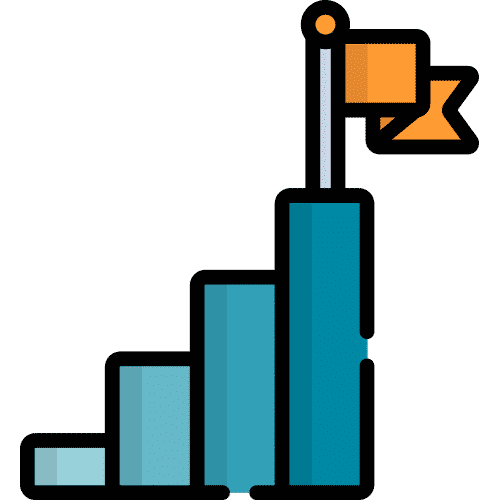Video Transcript
Hi, my name is Laura Morgan and I am a speech pathologist and brain injury specialist. I’m going to tell you a little of my background, how it lends me a unique perspective on brain injury and my treatment as a speech language pathologist, and why the tools and resources that Lingraphica offer are well-worth other speech pathologists using.
So my background, I graduated from the University of Tennessee in Speech Language pathology, with a specialization in oral rehab. I started my clinical fellowship at a longterm care and rehab facility in Maryland, where I became fast friends with my speech language pathology co-worker Anna. When I was halfway through the clinical fellowship, I was a buckled passenger in a very serious motor vehicle accident on the way to my grandmother’s funeral. Thankfully, everyone survived. I was the most seriously injured having sustained a moderate, severe diffuse occipital traumatic brain injury and complete fractures of cervical vertebraes, C1 and C2.
I believe it was a providentially arranged coincidence that two medical professionals witnessed the accident occur and were the first responders. They knew how to intervene in such a way that wouldn’t kill or paralyze me. I spent 72 days in hospitals, none of which I remember. Then after being discharged home, I completed several years of full-time rehabilitation. But while doing my own rehabilitation, I also completed over 400 hours volunteering in two speech pathology departments. Volunteering provided me with functionally challenging cognitive activities and also refreshed my speech pathology knowledge. My former coworker, Anna, and I spent many hours processing what I was experiencing as a TBI survivor. We compiled some of those observations for an article we co-authored for the ASHA Journal called the Leader, which was published in their December 2015 issue.
These observations were also shared in over a dozen multimedia presentations for graduate programs, speech pathology departments, and research facilities. The locations included the National Institutes of Health and the Walter Reed Military Medical Center. At one of those presentations, which was for the Brain Injury Association of Maryland, I met a speech pathologist, Tom Kravalski, who introduced me to an amazing facility called the Head Injury Rehabilitation and Referral Services, HIRRS, in Rockville, Maryland. I started at HIRRS as a Cognitive Rehabilitation Assistant, then transitioned into restarting my clinical fellowship. Because the many hours I’d previously completed in my clinical fellowship before the accident had expired, as had the Praxis scores I’d received when I passed the exam right after grad school.
While completing my clinical fellowship at HIRRS, I retook and passed the speech pathology licensing exam, and also passed the exam to become a Certified Brain Injury Specialist. At this time, I’ve worked at HIRRS for over three years where I daily have the opportunity to live out what I gained through my unique experiences. Having been on both sides of the speech pathology table, I recognize some of the challenges that this discipline is up against in providing rehabilitation after brain injury.
One thing I observed is that goals of some other therapies like those in physical therapy, more easily lend themselves to determination, since you can see the results of your hard work, or see the need for modifications or a new source of motivation. I personally experienced how if a task was cognitive in nature and I got something wrong, I had to try again with use of the problem-solving or other strategies being addressed. I couldn’t just tell my brain to simply work harder. Also, if the brain injury survivor has short-term memory deficits, as I did, and is very common after a head injury, the strategies can’t be recalled until they become habit out of repetition. So in my experience, cognitive challenges could be like banging my head against a wall over and over and over. Following a rehab session, I was likely to leave it only remembering what had emotionally impacted me the most, which for a highly goal oriented person like me, was often the most discouraging moments.
I think participation in speech therapy needs to be an encouraging endeavor because of the reasons I’ve covered, and simply because it’s hard. As SLPs, we need to motivate our clients throughout the marathon they are in. Providing opportunities for them to complete therapeutic activities and practice compensatory strategies. So how does the wonderful world of Lingraphica work into all of this? I think Lingraphica has done an incredible job providing relevant adult appropriate therapeutic activities and resources for both brain injury survivors and speech pathologists. I’ve worked with many clients on the talk path therapy site and in talk path news, both in stepping through an activity together on Zoom and in providing relevant homework to reinforce what had already been targeted during a session. I’ve been impressed with the wide range of activities available, so the assignments are easily customizable to different client’s needs.
I’m able to see how much time is being spent on activities and the performance levels, so can easily, conveniently make changes from my own desk, and the fact that the talk path therapy and apps are free, meaning they are accessible to anyone with access to an electronic device. Lastly, but not least, having completed the Lingraphica certification program and navigated through providing speech services remotely, I am so grateful for how readily available and helpful Lingraphica support has been. They have always responded so quickly and been so helpful, which gives me greater confidence in the services I am providing. I hope my experience with Lingraphica gives other speech pathologists the encouragement they need to check it out for themselves, so that together we can provide even more for individuals with the cognitive linguistic benefits of the Lingraphica tools and resources.

